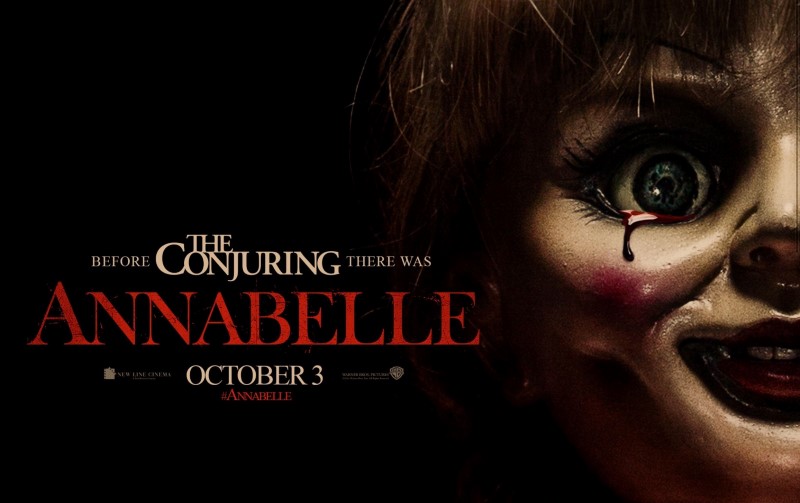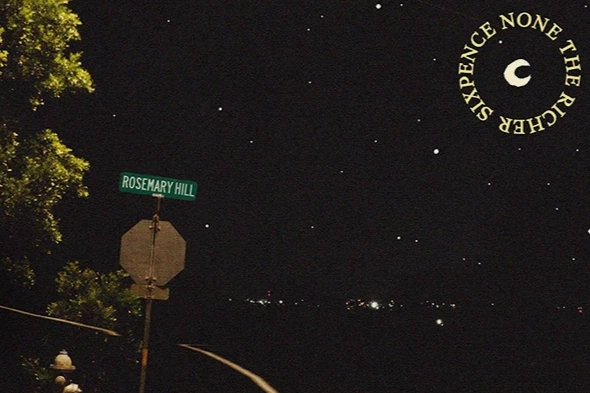Disclaimer: What follows are specific plot details of “Annabelle.” The review contains spoilers regarding the movie. Do not read this review if you have not watched the movie yet, and wish to in the future.
Just in case anyone was craving yet another poorly constructed “horror” film, they’re in luck. A prequel to director James Wan’s The Conjuring (released July 19, 2013), John R. Leonetti’s Annabelle, a rather terribly executed production, graced theaters everywhere with its unnecessary presence on Oct 3.
My expectations for the film were set much too high after seeing the vintage doll named Annabelle’s brief, yet frightening, appearance in The Conjuring. And unfortunately for the film makers, the only people who really deserve any credit would be the advertising team for making a commercial that successfully fools people into thinking that the film was actually going to be scary. Though, it is unfortunate that the scariest scenes were all spoiled in the trailer.
The plot, set in 1969, features a young married couple, John and Mia, (played by Ward Horton and Annabelle Wallis), expecting a baby. John gives his wife the doll as a gift to his wife to celebrate the imminent arrival of their baby. Now, why any pregnant woman in her right mind would accept such a hideous doll is beyond me, but anyway. The couple’s home is invaded by a satanic cult, and the blood of one of the members is splattered on the doll, thus resulting in the haunting. Thankfully, when the couple actually realizes that the doll is possessed by some sort of demonic spirit, they at least throw it away and move to an apartment. However, the doll reappears, and the wife, quite stupidly, places it in their newborn child’s room. The story itself was based off a real series of events, however, Hollywood turned it into a clichéd train wreck lacking any real surprises.
Despite the substandard structure of the movie, Leonetti somehow still managed to capture a few frightening sequences, one involving a stalled elevator in the dark (and I admit, I haven’t taken an elevator since). Though there were some mediocre frights, the other “scary” scenes include the most repetitive elements of horror films, such as creaking floors, home appliances operating on their own and mysterious writing on the walls.
The movie ended, quite abruptly after Alfre Woodard’s character, a woman who gets to know the couple when they move into the apartment complex, jumps out the window with the doll, ultimately giving her soul to the devil in order to save the young family. Suddenly, everything becomes all peachy and Woodard’s suicide is hardly addressed.
Just like The Conjuring, Annabelle was in fact based off of a true story, but in comparison to The Conjuring, it was hardly accurate. The real Annabelle doll, which was actually a Raggedy Anne doll, was given as a birthday present by a mother to her daughter, and the explanation of the doll’s demonic possession remains unknown. None of the characters in the movie are an actual account of what happened, which only makes the film that much more disappointing.
Regrettably, the few loud jump scares and eerie violins were not enough to keep the film interesting, and it was 99 minutes I won’t be getting back anytime soon. The Conjuring was a film that proves itself much more successful when it comes to scares, and triumphantly pulled off similar cliche components. Annabelle is nothing new, nor is it creative in the slightest. I have to say that overall, it was just another overhyped Hollywood horror film wannabe.
Parkway West Pathfinder gives “Annabelle” a 4.0/10.




![There are more than 20 open cardio machines at Crunch Fitness. I enjoyed the spacious environment at Crunch, a sentiment that was shared by sophomore Sanjana Daggubati. “[Going to] Crunch Fitness was the right decision because [it] feels more professional. Crunch’s workers are laid back, but not to the point where they don't care,” Daggubati said.](https://pwestpathfinder.com/wp-content/uploads/2025/09/IMG_5242-1-1200x900.jpg)

![Various empty Kit Kat wrappers crowd the desk, surrounded by scoring sheets. While production of Kit Kat flavors in the U.S. is limited, Nestlé, the owner of Kit Kat, manufactures hundreds of unique flavors in Japan, including the flavors ocean salt and passion fruit. “I thought there [were] some interesting flavors, and a lot of them were really unexpected,” senior Elle Levesque said.](https://pwestpathfinder.com/wp-content/uploads/2025/09/image-2.png)


![Pantone’s selection of the 2025 Color of the Year is revealed: Mocha Mousse. Ceramics teacher Ashley Drissell enjoys this year’s selection. “Maybe it’s the name but [Mocha Mousse] reminds me of chocolate and coffee. It makes me hungry. It’s very rich and decadent,” Drissell said.](https://pwestpathfinder.com/wp-content/uploads/2025/02/DSC_0015-1200x800.jpg)



